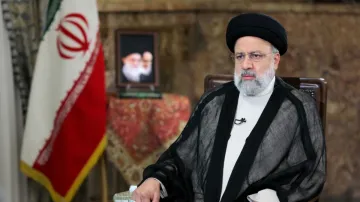The United States extended its "official condolences" on Monday for the death of Iranian President Ebrahim Raisi and other officials in a helicopter crash, according to a statement from the State Department. "As Iran selects a new president, we reaffirm our support for the Iranian people and their struggle for human rights and fundamental freedoms," said department spokesman Matthew Miller, however, president Joe Biden did not comment or condoled the death of Raisi
Impact on Iran's political landscape
President Raisi’s death is unlikely to result in immediate changes to Iran's ruling system or its policies, which are controlled by Supreme Leader Ayatollah Ali Khamenei. However, Raisi was considered a prime candidate to succeed the 85-year-old supreme leader, making his death significant for the future leadership dynamics in Iran. This development could increase the likelihood of Khamenei’s son, Mojtaba, becoming the next supreme leader, potentially leading to a crisis of legitimacy in the Islamic Republic, which was established as an alternative to monarchy.
Current political structure in Iran
Iran operates under a system where the president and parliament are elected, but the supreme leader holds ultimate authority over major policies, the armed forces, and the powerful Revolutionary Guard. The supreme leader also appoints half of the Guardian Council, which vets candidates for various elections, including the Assembly of Experts, the body responsible for choosing the next supreme leader.
Ebrahim Raisi, known as a hard-liner and a protege of Khamenei, was elected president in 2021 amid low voter turnout after the Guardian Council barred other prominent candidates. Following his death, Vice President Mohammad Mokhber, a relatively unknown figure, became caretaker president, with new elections required within 50 days. These elections are expected to maintain the status quo in Iran's political landscape.
Implications for supreme leader succession
While presidents come and go, significant changes in Iran’s policies or governance are expected only with the selection of a new supreme leader. The next supreme leader will be chosen by the Assembly of Experts, elected every eight years. Analysts believe the main contenders were Raisi and Khamenei's son, Mojtaba. Raisi's death now places Mojtaba in a potentially stronger position to succeed his father.
Potential reactions to Mojtaba Khamenei’s succession
The possibility of the supreme leader's son succeeding him could provoke backlash within Iran. Critics may view this as a move toward a hereditary monarchy, contrary to the principles of the Islamic Republic. Such a transition could spark anger among Iranians already disillusioned with clerical rule, as well as among regime supporters who might see it as un-Islamic.
Iran's economy continues to suffer from Western sanctions linked to its nuclear program, and strict enforcement of Islamic rule, particularly under Raisi, has alienated many, including women and young people. Recent years have seen significant protests, notably after the death of Mahsa Amini in 2022, which led to a violent crackdown. Raisi's death could complicate the succession process and potentially trigger further unrest in Iran.
(With agencies inputs)
Also read | Mahsa Amini: How Iranian President Ebrahim Raisi braved massive burqa protests despite mass furore
Latest World News
